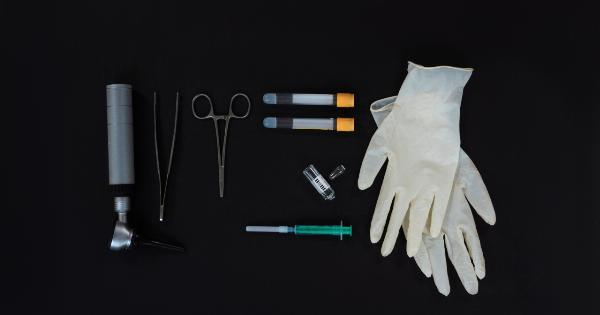It is estimated that one in eight women in the United States will develop invasive breast cancer at some point in their lives.
Although surgical intervention is one of the primary treatment options for breast cancer, the possibility of changes to the appearance of the breast can be a difficult consideration for many women.
Oncoplastic surgery is a relatively new technique that merges plastic surgery and breast cancer surgery to create a better aesthetic outcome. In this article, we will examine the advancements in oncoplastic surgery.
1. Breast Reconstruction
Oncoplastic surgery can be combined with breast reconstruction to achieve the desired aesthetic and functional outcomes. It may involve the use of implants, autologous tissue transfer, or a combination of the two.
The latest advancements in breast reconstruction techniques have led to improved results that are more natural-looking and better-suited to the individual needs of the patient.
2. 3D Printing and Reconstruction Planning
3D printing technology is now being used to create personalized implants for breast reconstruction.
These implants are created based on a patient’s medical imaging data, which allows surgeons to achieve a more precise fit than traditional implant techniques. Additionally, 3D printing technology is also being used to create surgical guides, which help surgeons to plan and execute highly accurate surgeries.
3. Nipple-Sparing Mastectomy
Nipple-sparing mastectomy is a relatively new technique that enables the surgeon to remove the cancerous tissue while preserving the nipple and areola.
This procedure is only suitable for certain patients with breast cancer, but when it is appropriate, it can provide excellent aesthetic results and psychological benefits for patients.
4. Minimally-Invasive Techniques
In the past, mastectomies were invasive procedures that involved the removal of large amounts of tissue.
But now, there are minimally-invasive techniques that can be used to remove the cancerous tissue with minimal scarring and damage to surrounding tissues. These techniques include endoscopic and laparoscopic surgery, cryosurgery, electroporation, and more.
5. Lymph Node Dissection Techniques
According to the American Cancer Society, the removal of lymph nodes is an important step in the diagnosis and treatment of breast cancer.
But the traditional lymph node dissection technique can lead to postoperative complications like lymphedema, which is marked by swelling in the arms or legs due to fluid buildup. The latest advancements in oncoplastic surgery include less-invasive techniques like sentinel lymph node biopsy, which can identify the specific lymph nodes that need to be removed without harming healthy tissue.
6. Use of Tissue Expanders
Tissue expanders are devices that are used to create a space in the breast after a mastectomy so that an implant can be placed later.
The latest advancements in tissue expanders include the use of remote-controlled models that can be filled with saline gradually over several weeks, which reduces discomfort and reduces the number of office visits needed.
7. Use of Fat Grafting
Fat grafting is a technique that involves taking fat from one area of the body and placing it in another area.
In breast cancer surgery, fat grafting can be used to improve breast symmetry after a lumpectomy or to create a better aesthetic outcome after a breast reconstruction. The latest advancements in this technique involve the use of adipose-derived stem cells, which can improve the survival rate of the transferred fat and provide better aesthetic outcomes.
8. Scarless Surgery
Scarless surgery is a new technique that involves using a single surgical incision to perform a double mastectomy and subsequent breast reconstruction.
During the surgery, the surgeon removes the breast tissue through the nipple and then places the silicone implant behind the muscle. The new technique eliminates the need for a second incision and offers better aesthetic results.
9. Use of Robotics
Robotic surgery is now being used in breast cancer surgery to achieve better precision, reduce surgical time, and minimize postoperative complications.
The latest robotic systems can create 3D maps of the breast and surrounding tissues, which allows the surgeon to perform a more accurate and efficient surgery.
10. Team-Based Approach
The latest advancements in breast cancer surgery involve a team-based approach that includes not only the surgeon but also a team of experts like radiologists, oncologists, and plastic surgeons.
This multidisciplinary approach allows each member to provide their expert opinion and contribute to the overall outcome.
Conclusion
Oncoplastic surgery is an important field that continues to evolve and improve. These advancements in oncoplastic surgery have allowed surgeons to achieve better outcomes with fewer complications and greater patient satisfaction.
With the latest techniques, patients can undergo breast cancer surgery with greater confidence and a better aesthetic outcome.



















